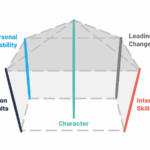Ah, nostalgia. There’s nothing like an afternoon browsing through old photos, recalling stories of fun and mischief with old friends. Remembering when you or your kids were young and full of surprises. The warm glow of happy memories.
There is also a darker side to these walks down memory lane. Isn’t it fascinating the way our brains tend to erase any negative aspects that might taint our remembrances, leaving us with a feeling of “the good old days”? For some people, this leads to a sense that nothing new, no potential future, can ever live up to their past.
I have coined this Camelot Syndrome. What is it? In short, unrealistically idealizing the past that can, if unchecked, lead to unhealthy, unproductive nostalgia. The type of nostalgia that holds you – and if the change is happening within your organization or family – back from progress.
And let’s face it folks. The only constant in life is change. Change is inherently embarked upon to create something new, or to improve upon something. Rarely is change meant to make something worse – when and if it does, well, that’s another article for another day. But at its core, change is a vehicle for progress. You can waste your energy fighting it, but to what end?
Why “Camelot”? Because in Arthurian legend, Camelot was a society in perfect harmony and balance, a Utopia. It represents an idealized world of equity, peace, and success. The key word here is idealized. What does that mean? According to Oxford, “to regard or represent as perfect or better than in reality.” You essentially take an ordinary, flawed thing, and turn it into something ideal and perfect.
How do you coach people through and out of their Camelot Syndrome? Try this on for size:
How true is it?
This is the question I ask my clients who are suffering from Camelot Syndrome, stuck in change resistance, particularly during mergers, acquisitions, and corporate reorganizations. When they are reminiscing about the wonder and magic of their former organization, and how their old systems, processes, culture, and general way of treating people was better, happier, smarter, more efficient than whatever they are now facing.
I learned this question over 20 years ago, after I was recruited away from a small, tech-savvy firm into a “big league” corporation that I quickly learned was stuck 20 years in the past. After muscling through my first year of endless paper documentation and hierarchical decision making, we were acquired by a much larger organization who swept in with efficiency, technology, and processes that were terrifying to most, but exciting and energizing to me.
As my former colleagues decided if they wanted to join me “on the bus” and fully embrace and enable the changes, or if they wanted to pine away for Camelot, I would often ask how true their memories were…memories of a company that held women back, judged leadership based on family/marital status, did not pay for performance, still utilized a paper-based performance management process, and still required you to hit “Shift+F7” to print (OK, I am THAT old).
To be fair and balanced it was also a wonderful company. It had been successful for a reason. Clients came first, and loyalty to employees was a core value. Executives meant it when they said we were all part of a corporate family. It was also a company smart enough to know when it was time to grow up and allow itself to be acquired.
But that one question, for those willing to listen with an open mind, was – IS – a page turner. Many of my coworkers realized they could honor their love and memories of the former company, while also diving in headfirst to the possibilities offered by the new, merged organization. That in embracing the vision of what we could become, they weren’t “cheating” on the old organization. They were simply moving forward.
It’s important that I emphasize, any and all change communication assumes people are listening – listening with their ears, minds, and hearts. With a willingness to consider that holding onto the past was potentially holding them back from the future, growth, and progress. So, the next time you run into change resistance in the form of harmful nostalgia, from others or yourself, simply ask, “How true is it?”







